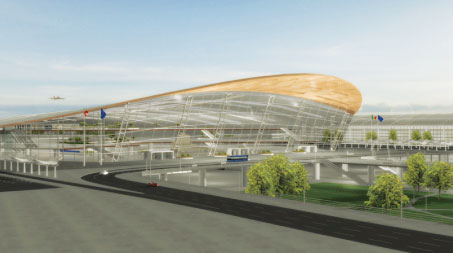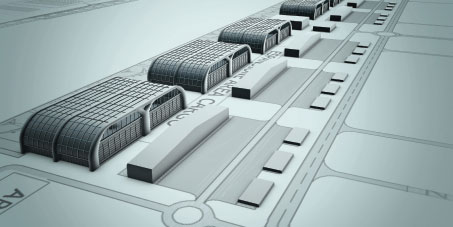
Fabrizio Palenzona, Chairman, AdR: “Thanks to the rational attitude of the government, that vicious cycle for which airport charges remained unchanged for 10 years, with airport operators’ accounts further strained in the meantime by a number of inappropriate unjust taxes has been broken at last.”
The collaboration echoes the visionary alliance created by Aéroports de Paris and Schiphol Group last year. Increased competition between European airports and the emergence of the Middle East hubs means innovative strategies are required to maintain and enhance market position. Central to the AdR-SEA strategy is recognition that airports must continue their development to position themselves to withstand international competition, which will be increasingly aggressive when the crisis is over.
The main goal of the AdR-SEA agreement is to contribute to Italy’s growth by working in a system and driving a period of collaboration that will provide significant new infrastructure. The operators are keen to emphasise that Rome and Milan are two complementary airport systems. “Milan is characterised by a catchment area composed of mainly outbound business traffic, while Rome is characterised mainly by inbound tourism traffic,” said Bonomi.
A key aim is intermodality – a balanced and intermodal domestic system of passenger and cargo traffic mobility. The common goal is the harmonious and simultaneous development of road and railway accessibility/connectivity to and from the airports, including direct connection with the high-speed rail network. “Italy is a great country and our two hubs, together, have a highly competitive international position. Teamwork is thus allowing Italy to rely again on two modern airport infrastructures, capable of competing with the other European and world airports,” said Palenzona.
CAPEX plans
The capital expenditure plans presented by AdR and SEA will allow both airport systems to be internationally competitive, and will fill the infrastructure gap to catch up with their European competitors. SEA has two plans; the first, to be implemented between 2009 and 2020, is aimed at upgrading infrastructure and services, while the long-term plan, to be implemented between 2020 and 2040, envisages important construction work. Some €1.5 billion will be invested in Malpensa and Linate airports between 2009 and 2020; at Malpensa this will include improvements to Terminal 1, construction of a third runway and development of a Cargo City, while Linate’s role as the ‘city airport’ will be strengthened, characterising it as ‘salotto di Milano’, and allowing the airport system to be ready for the Expo 2015.

The first module of Rome Fiumicino’s new North Terminal will be operational in 2020 and will double capacity to 100 million.
The 2020-2040 plan foresees additional infrastructure development at Malpensa, totalling €4.5 billion. “Firstly, a new terminal will be built, allowing us to distribute and further increase passenger traffic. Secondly, construction of a new, large integrated logistics centre is envisaged: an entire cargo area that will make Malpensa compete with the leading commercial airports worldwide,” said Bonomi.
The development of Rome’s Fiumicino airport will see a capital expenditure of €3.6 billion in the period to 2020, with the construction of infrastructure that will improve both quality and capacity. Projects include: operation of the new Pier C, completion of works on the new Alitalia-dedicated boarding area A, construction of a new baggage handling system, a new multi-storey car park, a new automated people mover, and a new runway. The first module of the new North Terminal will be operational in 2020 and will double capacity to 100 million.
“SEA and AdR are developing 17 projects for a total capital expenditure of about €5 billion by 2020 and €13.7 billion by 2040, creating 2,500 jobs for every additional one million passengers,” said Palenzona. “If we consider the Lazio region, the growth of Fiumicino airport from 35 million passengers to 60 million passengers expected in 2020, will entail an employment growth of over 60,000 people in 10 years. That kind of growth will have enormously positive effects on the companies operating in the Rome air transport sector, to say nothing of the economic transformation it will bring to the region.”

Guiseppe Bonomi, President and CEO, SEA: “Compared to European average charges, those applied in Italy are 41% lower. SEA and AdR, however, represented to the Italian Government that it is necessary to have a stable and agreed regulatory framework, with automatic mechanisms of adjustment of airport charges to CPI (Consumer Price Index) and of alignment with European benchmarks.”
New charges regime
The Italian Government recently implemented a new airport charges regime under the so-called ‘anti-crisis decree’, covering airports handling more than 10 million passengers per year. Coupled with the opening of bilateral agreements, this has paved the way for increased competitiveness at international level. The new charges scheme brings to an end 10 years during which they remained unchanged. “Compared to European average charges, those applied in Italy are 41% lower,” said Bonomi. “SEA and AdR, however, represented to the Italian Government that it is necessary to have a stable and agreed regulatory framework, with automatic mechanisms of adjustment of airport charges to CPI (Consumer Price Index) and of alignment with European benchmarks. It is necessary to have certainty of results in terms of the revenue generation, so as to allow long-term capital expenditure planning and to guarantee the financial sustainability of the airport.”
The new charges scheme allows infrastructure modernisation, while preserving the relationship between costs and charges as provided for in the rest of Europe, and making reference to average continental charges. Significantly, it means airports handling more than 10 million passengers per year can enter into planning agreements directly with ENAC (National Civil Aviation Authority).
In the case of Rome’s airports – Fiumicino and Ciampino – even with the new charges regime, in real terms airport charges have decreased by 17% over the last 10 years. “Thanks to the rational attitude of the government, that vicious cycle for which airport charges remained unchanged for 10 years, with airport operators’ accounts further strained in the meantime by a number of inappropriate unjust taxes has been broken at last,” said Palenzona. “This charges increase will allow SEA and AdR to be ready to seize the opportunities of the forthcoming economic recovery. All the indicators of the air transport sector are unanimous; although it is difficult to say today how long the present economic and financial crisis is going to last and what will be its effects and repercussions, one thing is certain: as all analysts assert, in the next 18-24 months traffic volume will grow again in Italy and especially in Rome and in Milan.” The expected increase in air traffic volume and, consequently, in passenger traffic to and from Italy after the financial crisis is over will provide opportunities in the domestic transport system. The AdR-SEA collaboration will enable the airport operators to seize those opportunities and retain market position, with significant infrastructure investment. These capital expenditure plans are, in turn, facilitated by a welcome new charges regime after 10 years of stagnation.








